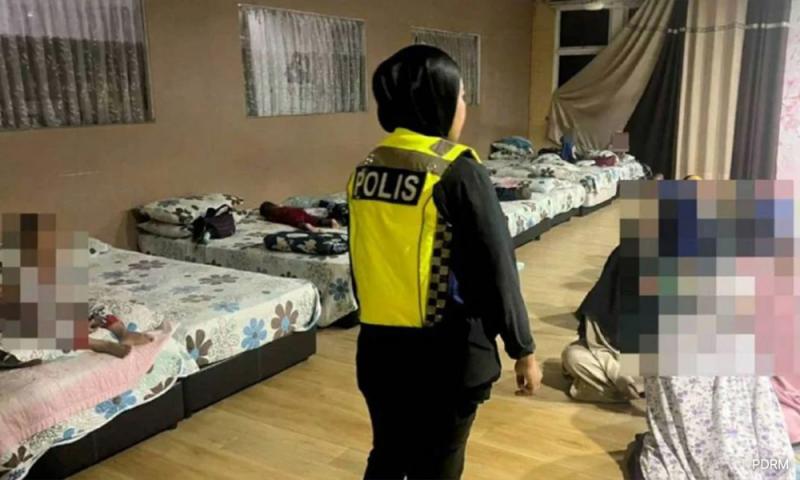LETTER | Children, shelters and systemic crimes
LETTER | The recent case of a global organisation in Malaysia making headlines illuminates the degree of ignorance, lack of oversight, lackadaisical attitude and apathy within the organisation and people with a vested interest in it.
Mounds of opinion and theories were hurled towards the organisation, with some coming to its defence.
The overwhelming response is expected following the discovery of 402 children in multiple shelters nationwide.
Allegations of sexual abuse, child trafficking, child abandonment, sodomy, forced labour, sexual grooming, exploitation and other related offences continue to fill our daily news.
Certain individuals have been apprehended and remanded in furtherance of the allegations.
The colossal crimes following the discovery of the children in the shelter demonstrate systemic abuse and how sexual violence was carried out with impunity.
As astonishing as this case may be, this is not the first time a religious organisation has been accused of human trafficking, sexual exploitation, and abuse of power.
The first documented case of sexual abuse occurred in 1629 inside the Catholic Church at a school in Rome, followed by countless allegations of sexual abuse, exploitation and neglect in the United States, Europe and other parts of the world.
Malaysia also had its fair share of institutional violence and abuse. Let’s not forget the case of some tahfiz schools and religious teachers who were found to have physically or sexually abused their students.
Until recently, we still hear of children being tormented and sexually abused by their religious teachers or schoolmates.
Despite the plethora of laws available to protect children and vulnerable communities, children continue to be exploited mercilessly.
Their complaints are often dismissed, disbelieved and not prioritised. It’s as if they are invisible or insignificant until a tragedy occurs.
Shelter or prison?
Not much is known about how shelters operate and sustain themselves. In most instances, shelters rely on donations and funds from the government, NGOs, companies, and the public.
Shelters are expected to be a safe haven for people who seek refuge and protection. It’s a place where occupants can get food, bedding, clothing and basic amenities.
In most instances, occupants of shelters are composed of vulnerable and marginalised groups such as orphans, trafficked victims, domestic violence victims, the homeless, the disabled and others in need of help.
Shelters typically have rules to regulate and control the daily activities of the occupants. They can also be, to some extent, carceral, where rules are designed to restrict, restrain, and subjugate their occupants.
Some shelters also impose harsh and punitive sentences on occupants who breach the shelter rules. In this instance, it wouldn’t be far-fetched to describe occupants as captive communities.
Regardless of the nature of shelters, it’s imperative to ensure the well-being and welfare of its occupants are taken care of.
However, it’s important to note that a shelter is not a dumping ground for children or for people who seek to absolve their responsibilities as a guardian.
It’s somewhat shocking and disturbing to hear that some parents have no other option but to leave their children in the shelter in order for them to work and earn a decent living. Even more shocking is the allegation of forced labour the parents had to endure.
Turning a blind eye
With all being said, is it fair enough to completely leave this to the enforcement officers alone? Or is this a case of institutional failure?
There have been comments on how this case reflects institutional failure due to the inaction and non-responsive attitudes of certain agencies that were alerted to this matter.
A further question that arises is how these shelters have been allowed to operate with impunity, and have there been any complaints by the victims or aggrieved parties?
To answer this, it’s pertinent to ensure that we do not engage in victim blaming or victim precipitation, which refers to holding the victim accountable or partly accountable for their own victimisation.
According to previous studies, there exist certain barriers to reporting malpractice and abuse when it involves religious organisations.
They include fears of disclosing to devoutly religious families, attitudes to sex and sexuality in religious communities, fears of being ostracised, reluctance to “bring shame” to the religious organisation, and cultures of secrecy and abuse.
Children who were brave enough to disclose their ordeal experienced inappropriate responses or had their complaints dismissed.
In some cases, organisations have attempted to silence victims and their families by threatening them with expulsion or other forms of punishment. There are also cases where victims are coerced or offered a settlement to keep quiet.
Dealing with trauma
Regardless of how we extrapolate the findings in any child abuse issues, we need to be reminded of the trauma that abuse victims face, which could impact their lives.
Trauma does not perish and disappear over time; it lingers and can develop into PTSD, depression or other mental and health illnesses.
As a society, we need to be vigilant and have strong moral and ethical values. We also need to display our compassion, empathy, and humanity toward children, vulnerable groups, and voiceless beings.
We pray that investigations be carried out fairly and that the children in the shelter receive enough care, love, and support from their families and the community.
The writer is a criminologist and deputy dean (postgraduate affairs) at the Faculty of Law, Universiti Malaya.
The views expressed here are those of the author/contributor and do not necessarily represent the views of Malaysiakini.
RM12.50 / month
- Unlimited access to award-winning journalism
- Comment and share your opinions on all our articles
- Gift interesting stories to your friends
- Tax deductable
